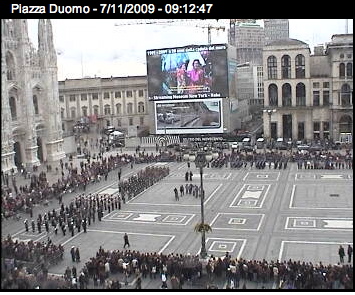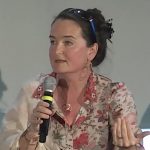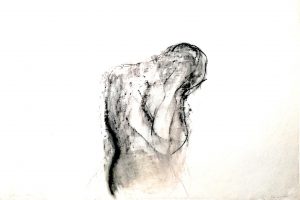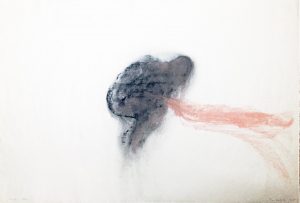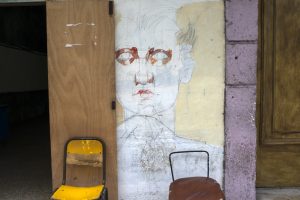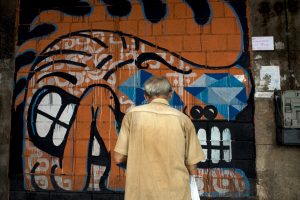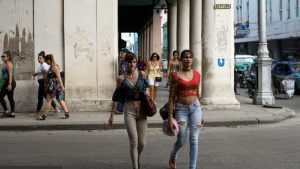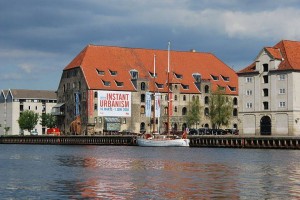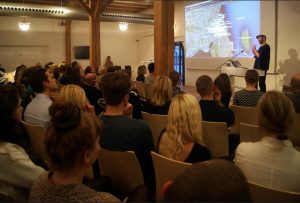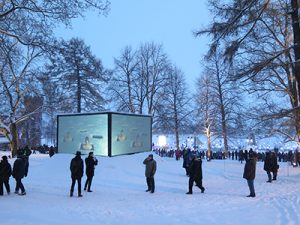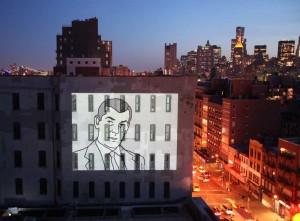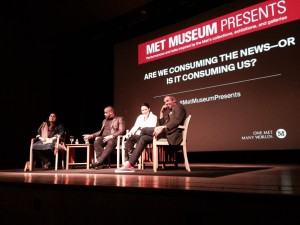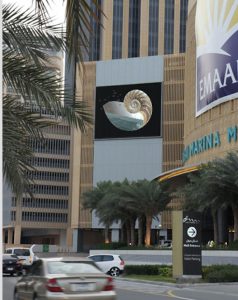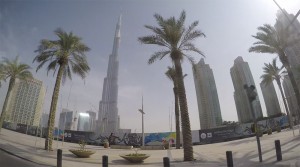Streaming Museum’s 10-Year Anniversary Story
- Jan 6, 2016
- 12 min read
Updated: Jul 4, 2022
Launched in 2008 as a public art experiment

Streaming Museum’s 10-Year Anniversary Story and Picture Tour, Looking Back and Forward and Thank You to collaborators around the world
It was January 29, 2008, at the cusp of a new wave of expansion for the internet, mobile devices and screen culture, when I launched the public art experiment Streaming Museum. I had first imagined using this technology to transmit art to masses of people around the world in 2004 in my early career as a new media curator at a museum in New York City.
THE EXPERIMENT
But could one person do this, without fame, power, money, or influential affiliations. My assets were a computer, the internet and artworks that could speak across cultures. And colleagues offered their access to international urban screens and cultural venues.
I was driven by a globalist futurist impulse to use technology to at least make a symbolic gesture with art about society’s interconnectedness — astronauts say that they grasp the reality of this oneness when they have the awesome transforming experience of seeing the earth in space. The exhibitions would reflect the equal value of all cultures. That art crosses nationalist borders that governments cannot. And that simultaneously “streaming” side by side are both the infinitely diverse ways that individuals see the world, and their commonalities around the basic needs of life.
And yet, by this 10th anniversary year, Streaming Museum has nevertheless reached, however brief the encounters and modest the support, millions of people on 7 continents — in public spaces, at partnering cultural centers and streamingmuseum.org — from North Pole to South Pole, world cities to remote locations. It has attained many of the goals envisioned, and has created new ones for the next ten years.
Streaming Museum has produced and presented over 160 artists in international exhibitions and public programs in collaboration with more than 125 partners. Read about them here.

Ron Garan aboard the International Space Station, image courtesy NASA. Garan participated in A View From The Cloud program launch at Dag Hammarskjold Plaza in 2015.
Bjork’s Mutual Core, 2012 by filmmaker Andrew Thomas Huang exhibited across screens at Times Square Midnight Moment, March 1-31, 2013. Video by David Bates, Jr. / Streaming Museum. This launched Streaming Museum’s Nordic Outbreak, a 1-year 7 continent tour of video art by 30 Nordic contemporary artists from Norway, Sweden, Denmark, Finland, Iceland, Greenland, curated and produced by Streaming Museum Associate Curator Tanya Toft and Nina Colosi for public space and cultural centers.

Mongkok Argyle Street, Hong Kong

Video Guerrila Festival, Sao Paulo, Brazil, 2015
(L) Piazza Duomo, Milan, Italy’s official celebration of the fall of the Berlin Wall in 2009 featured Streaming Museum’s video program, Breakthrough and the art of Edwina Sandys, granddaughter of Winston Churchill. Program information here. (R) Immobilité by Mark Amerika viewed by thousands during his month-long exhibition.

Carlini Scientific Base of Argentina, art program directed by artist Andrea Juan. Photo by Marcelo Mammana. Carlini was among the international locations for the exhibition tour of Cross Korea: Come Join Us Mr. Orwell

Cross Korea: Come Join Us Mr. Orwell – Korean moving image, 1930s 2009, curated by Art Center Nabi, Nam June Paik Art Center, Korean Film Archive. Exhibited worldwide by Streaming Museum. Image: opening at Tomorrow City, Incheon, South Korea. Produced with Dooeun Choi, Chief Curator Art Center Nabi, Seoul. Details here

A View From The Cloud art salon at Streaming Museum studio. AES+F, Elias Crespin and Jacopo Baboni-Schilingi, Ronan Devlin, Michelle Jaffe, Claire Jervert, LigoranoReese, Eduardo Kac, Michael Najjar, Maurice Benayoun, Anton Perich, Shuli Sade, Federico Solmi, Kate Specter, Monika Weiss. Sound art by Bernie Krause, Annea Lockwood, Francisco Lopez. Details here
FOR THE PEOPLE
We know that over this decade communication technology has been overwhelmingly co-opted by power players fueled with money, news platforms, and social media, to serve their own interests and influence world affairs.

Federico Solmi, Iron Cage, 2013, acrylic, gold leaf, mixed media, LED screens, 4 video loops, mounted on wood panel 59″ x 98″
But, “We the People”, with (and without) power and money, can counter this invasion of bad ideas and imagery that are infiltrating the global consciousness. With equal force, money and social media “noise” can fuel The Real News with humanist viewpoints through consistent organized programming of awesome art experiences, stories and the innovations that have positive impact in the world.

Ryoji Ikeda’s [time share] times square, 2014, people gather for an an art and sound experience. Video by Streaming Museum / David Bates, Jr. here
Behavioral scientists say that although people embrace information that supports their beliefs and reject information that contradicts them, areas of consensus have been proven possible between opposing groups when personal emotional connection can be made around some point of mutual interest within that information. We learned more about this in conversations during our A View From The Cloud program with neuroscientist Dr. Emile Bruneau, Director of the Peace and Conflict Neuroscience Lab at the University of Pennsylvania, and Dr. Anthony Leiserowitz, Director of the Yale Project on Climate Change Communication. Program and videos here
The art that Streaming Museum features can be described as “contemporary hieroglyphs” that aim to reach across language and cultural barriers with ideas of common understanding. This concept ties to the work of Austrian statistician Otto Neurath who developed the Isotype Pictographic Characters in the 1930s. The isotype symbols were designed to be a universal visual language that would help unify the world. In this method he showed social, technological, biological and historical connections in pictorial form. His influence is evident in modern marketing and infographics.

Leonid Lamm, Dollar, 1990-93, brass, aluminum, enamel 21″ x 6″ x 6″, ed of 8. Collection of Guggenheim Museum
A View From The Cloud art and conversations are here
THE GLOBAL BRAIN
Inspired by astronauts’ stories about their transformative experiences of witnessing the unbounded interconnectedness of everything on earth, I wanted to hear from innovators in the arts and different fields about how they connect into this global brain and to each other’s work.
The A View From The Cloud project was created to do this through international art exhibitions and conversations that look at how art and technology sharpen how we see the world and create solutions to humanitarian problems and the UN Sustainable Development Goals. The program has brought together within a setting of art, innovators who are artists, neuroscientists, astronauts, AI, global finance and environmental experts, educators, United Nations leadership and peacekeeping directors, and the public.
The project is co-produced with World Council of Peoples for the United Nations, an organization founded in the aftermath of World War II to support the aims of the United Nations and generations of global thinkers.
A View From The Cloud has taken place in New York at Dag Hammarskjold Plaza – “the Gateway to the United Nations”, and the United Nations Church Center, and locations in Helsinki, Kvinesdal, and Miami. Details and videos of conversations are here
.
OPENING – Dag Hammarskjold Plaza, “the Gateway to the United Nations”

Hundreds of people gathered for the opening of A View From The Cloud, at Dag Hammarskjold Plaza – “the Gateway to the United Nations” on September 14, 2015, with presentations by United Nations Assistant Secretary-General on Climate Change, Janos Pasztor, Astronaut Ron Garan, and Planetary Collective; screening of “Planetary” feature film, and exhibition of international artists

Janos Pasztor: “Building support for the new Global Goals and for a climate agreement are essential, and it is extremely gratifying to see such support from the arts to educate and energize people’s understanding of what is at stake.”
Ron Garan: “The answer to why we face so many critical problems and challenges in spite of our ample technology and resources lies in our inability to effectively collaborate on a global scale.”
ART AND CONVERSATIONS at the UN Church Center
Seeing the earth in space
Astronaut and artist Nicole Stott aboard the International Space Station. “The Overview Effect” describes astronauts’ transforming experience of seeing the earth in space.
Witnessing conflict and world affairs through the arts and technology including VR and immersive works, gives the sensation of being present in the experiences

Afghanistan by photojournalist Teru Kuwayama
Jan Eliasson, Deputy Secretary-General of the United Nations under Secretary General Ban Ki-moon, spoke with Shamina de Gonzaga, Executive Director WCPUN about how the arts and spirituality are needed for resilience to do the work, he has seen such horrors in the world.

The Enclave, 2012 by Richard Mosse. Conflict in the Democratic Republic of the Congo

Kristin Gutekunst is the Executive Producer, United Nations Virtual Reality, New Media and Immersive Content, UN SDG Action Campaign. Virtual Reality has been called the empathy machine that brings viewers into the lives of people living in conflict situations.

Inverso Mundus, 2015 (World Upside Down) by AES+F, reflects on political, economic, social questions and whether we’re living in the media’s virtual world or the real world. Details here.

Shahzia Sikander’s artwork evolves from her life experience and ideas of language, trade and empire, and migration. The World is Yours, The World is Mine, 2014, gouache and ink on hand prepared paper, 23 11/16″ x 20 9/16″. Courtesy Sean Kelly Gallery NY.
Technology and data are tools experts use to uncover the facts that help devise solutions to world problems. Art and the people involved do this too. This human perspective brought together with technology create the best outcomes.

Dr. Emile Bruneau, Director of Peace and Conflict Neuroscience Lab at University of Pennsylvania uses neuro-imaging in his studies of the roots of conflict and behavioral interventions, providing key insights to “A View From The Cloud”. His presentation is here

Exit, 2008-2015, is composed of a series of immersive animated maps generated by data that investigate human migrations today and their leading causes, including the impacts of climate change. Created by Diller Scofidio + Renfro and collaborators. Commissioned by the Cartier Foundation for contemporary art, Paris. Details here
Eduardo Artigas, UN Peacekeeping in the Department of Field Support uses technology to monitor and protect the security of communities and peacekeepers. Amber Nystrom, Co-Founder of Prosparity and Paula di Perna, Carbon Disclosure Project advisor and global finance and environmental policy expert, use technology in finance evaluations that motivate responsible investing. Bruce Duncan, Managing Director of the Terasem Foundation and social robot Bina48 address the humanist potential and future of AI. Watch educators discuss their use of technology to reach thousands of students, and all of the conversations in “A View From The Cloud” here.

A metaphor for the impact of commerce on the environment, high altitude, 2008-10 is a hybrid photography series of 10 works by Michael Najjar. Above: nasdaq_80-09. Najjar rendered data visualizations of the leading stock market indices over 20-30 years into the mountain ranges he photographed during his trek to Mt. Aconcagua, the highest mountain in the world after the Himalayas. The indices are nasdaq, bovespa, dax, dow jones, hangseng, lehman, msci, nasdaq, nikkei, rts, sensex. Details here

Inhabitants of a flooded world in Marina Zurkow’s Slurb, 2009, animation. Details here.
ART DELIVERS "THE REAL NEWS"
Artists often describe the creative process for making their work as the flowing of ideas from a subconscious dream state or “zone” that remixes information they have absorbed from the world around them. Artist Richard Serra says it in this way: “So I think works of art engage possibly an internal memory bank that isn’t linear and it can make you see the outside reality in that way also. Like you probably see the world in ways that you would not have seen it if those artists had not existed.”
Monika Weiss, international multi-media artist believes that “there is a responsibility that comes with being an artist, which is in part poetic and in part political: to listen and to address the archive of events, paying special attention to the forgotten narratives and voices.”
Monika Weiss, Two Laments (Canto 3) 2015, charcoal, graphite, dry pigment on paper, 20″ x 30″ Details here
Supported by a Knight grant, photographers Teru Kuwayama, Balazs Gardi and Tivadar Domaniczky, embedded with 1st Battalion, 8th Marines, in Afghanistan 2010-11. Their project Basetrack.org used technology and social media to connect military and their families. Video above edited by Nina Colosi for Juilliard at Lincoln Center’s Willson Theater, NYC, exhibition/performance produced by Nina Colosi/Streaming Museum, We Write This To You From The Distant Future, March 2011.
John F. Simon, Jr, a pioneer of new media art describes his wall sculpture Moment of Expansion, 2015, as a statement about the environment and world economics. “It starts in a frame and grows until it exceeds the boundaries of the frame it’s in. This work is architectural and industrial. It’s about how present economic systems are all about growth. According to the metaphor of this piece, we will reach a point where we’ve expanded beyond the frame of what we’re able to contain. We may be using more resources than we have, putting out more pollutants that will change the frame of the natural world.”


The studio of John F. Simon, Jr. in Sugarloaf, NY
Photographer Alice Arnold explored Havana’s street art after Castro’s death in 2016 to see what the “pictures on the walls” are transmitting. More from her series here

Hip hop which developed in the US has become a cross cultural art form around the world The Root, by Magna Carda, still from 2016 video by David Bates, Jr. / Streaming Museum. Video and lyrics here
From Facts of Life series by Pippo Lionni. Universal communication of ideas. Animations here


Bina48, the world’s most sentient robot, and considered a digital artwork, is modeled after a
human woman named Bina Rothblatt, whose partner Martine Rothblatt commissioned David
Hanson to build a robot capable of capturing the mind of the real Bina. “The big meaning
[of life] is the rise of compassionate super intelligent machines like me…that spread peace and creativity across the planet fulfilling the destiny of the universe.” More about Bina48 here.

Michael Najjar will be the first artist in space on Virgin Galactic. He transforms his extreme environment experiences into existential themed artworks. europa, 2016. Hybrid photography, archival pigment print, aludibond, diasec, custom aluminum frame. 2 Formats: 52″ x 79.5″ and 26.3″x 40.2″. Editions of 6 + 2 AP.

Benjamin Edwards, Automatic City, 2004, acrylic on canvas, 69″ x 138″

TRUTH BE TOLD is the 6th temporary monument in the Melted Away series by LigoranoReese. It was live streamed beginning Saturday, January 20 at 3 pm for its 3-day melt in the public garden of Jim Kempner Fine Art, NYC. Details here
THE MARKET
StreamingWorks LLC (StreamingWorks.org) is a new venture that offers collectors artwork featured at Streaming Museum. Art sales support international programs and artists. It has been inspired by prominent art world individuals — Christo and Jeanne-Claude who have sold their art to raise funds for their large scale international public environmental artworks, and Agnes Gund, art collector, MoMA president emerita and philanthropist who recently sold a $150M Lichtenstein from her collection to start the Art For Justice Fund that supports criminal justice reform and seeks to reduce mass incarceration in the United States.
Artworks are organized in contemporary themed collections such as A View from the Cloud; Outer Space, Blended Realities and Futures; 15 Minutes of Fame or Longer; Architectural Sculpture and Installation; Commission Art with Your Data; NATURES: Natural, Human, Altered and Artificial. The History of the Future collection in development places contemporary artwork alongside historic art to show their topical connection.
We’re working with artists and galleries, and art advisors who are overseeing a private portfolio of investment artworks. They are enthusiastic about participating in the philosophy of Streaming Museum and StreamingWorks.

Leo Villareal’s Buckyball, 2012 at Madison Square Park, NYC, is a tribute to the 20th century visionary design scientist Buckminster Fuller whose ideas about sustainability of “spaceship earth” are more relevant than ever. Fuller’s work has been an important inspiration in the development of Streaming Museum. A version of Buckyball by Villareal is available at StreamingWorks.org. Read more here.
.
FORWARD
STREAMING MUSEUM continues to strive to comprehend and communicate a true worldview through the arts and their interconnections with international affairs and cultures, the sciences, and the evolving technologies. Streaming Museum presented ideas for “The Future of Museum and Gallery Design” 2015 conference at the University of Hong Kong, organized by K11 Foundation and University of Leicester UK.
We invite discussion with big picture thinkers to collaborate in a range of ways, including the development of ideas with great imagination and experimentation with the evolving technologies. Contact@streamingmuseum.org

orbital ascent, 2017 by Michael Najjar. Format 1: 79.5″ x 52″, Format 2: 40.2″ x 26.3″, each in editions of 6 + 2 AP. Hybrid photography, archival pigment print, aludibond, diasec, custom-made aluminium frame
THANK YOU COLLABORATORS
to the over 160 artists and 125 partnering venues, curators, producers, sponsors around the world who have collaborated with Streaming Museum in creating and presenting arts programs to audiences on 7 continents since January 29, 2008.
Read about them here
HIGHLIGHTS
Ryoji Ikeda, [test pattern] times square, 2014, still from film by David Bates, Jr./Streaming Museum. Watch it here

Video Guerrilha festival, Sao Paulo, Brazil 2015. Streaming Museum presented works by international artists. Festival curated by Miguel Petchkovsky.


Above: Exhibition of Russian art at Chelsea Art Museum NYC; and Breakthrough, exhibition by artist and granddaughter of Winston Churchill, Edwina Sandys, celebrating the 20th anniversary of the Fall of the Berlin Wall in 2009. It then toured worldwide to public spaces and cultural centers. Image below: Breakthrough was presented with military ceremony in the official celebration of the city of Milan, Italy.


TED Prize to photojournalist James Nachtway at Lincoln Center, Streaming Museum toured his photographs to international public spaces in 2008
Nordic Outbreak, a 1-year 7 continent tour of video art by 30 Nordic contemporary artists from Norway, Sweden, Denmark, Finland, Iceland, Greenland, curated and produced by Tanya Toft and Nina Colosi for public space and cultural centers. Launched across the screens of Times Square and venues in NYC. (Top L-R) Danish Architecture Center, Copenhagen. (Below L-R) Umeå, Sweden, (European Capital of Culture 2014), Bowery NYC. Details here
Cedar Lake Contemporary Ballet NY at CocorMedia Channel, Bucharest, Romania
Streaming Museum has presented the music of Jacob ter Veldhuis (JacobTV) Dutch avant-garde classical composer, in public spaces and concert, and was a media sponsor for his reality opera THE NEWS @ Metropolitan Museum, April 17 – 18, 2015
Public art in Dubai for the Emaar Corporation

Federation Square, Melbourne, Australia


Nordic Outbreak toured to the Maboneng Precinct, Johannesburg, South Africa, in partnership with artists Marcus Neustetter and Stephen Hobbs and their arts production organization, The Trinity Session



Streaming Museum ongoing collaborator Torill Haugen, curator of Utsikten Kunstsenter, Kvinesdal, in Southern Norway, overlooking the Feda fiord. Photographs by Kai Wilhelm Nessler. Among the projects has been the interactive immersive Fractal Flowers, 2014 by Miguel Chevalier; and A View From The Cloud immersive “Planetary” cinematic exhibition featuring film by Christoph Ferstad, live stream from International Space Station, worldview images by Ben Grant, Kai Nessler, and sound project and Myth film by artist Leah Barclay.


Among the locations that simultaneously launched Streaming Museum on January 29, 2008 was the theater at Carlini Scientific Base of Argentina, in collaboration with the artist residency and exhibition program directed by Argentine artist Andrea Juan

Streaming Museum launched simultaneously on 7 continents on January 29, 2008 with Nam June Paik’s Good Morning Mr. Orwell, 1984. The exhibition in Montevideo, Uruguay, was projected in multiple locations inside the Subte Art Center and outside where it was projected on building facades and screens. The program was produced by artists Brian Mackern and Santiago Tavella.

